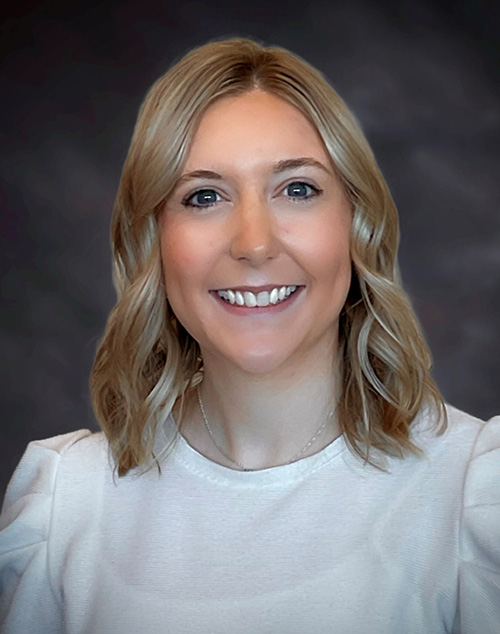posted
on 10/13/2025
in
BLOGS from St. Anthony
Step 1: Start With A Mammogram
 |
| Madison Haberl, R.T.(R), director of imaging services for St. Anthony |
Early detection of breast cancer is critical to a positive outcome. In fact, when found in its earliest localized stages, the five-year survival rate is 99%. Early detection starts with a mammogram.
“According to the American Cancer Society, women ages 40 and older should have annual mammograms,” says Madison Haberl, R.T.(R), director of imaging services for St. Anthony.
Patients can schedule their annual mammogram at St. Anthony through their doctor, by visiting our website or by calling 712-792-5202.
Step 2: Discuss Results With Your Provider
Following the initial exam, you should get your results in a few days to a week, depending on your provider. From there, they typically give you the all clear and recommend another mammogram in a year, or they’ll walk you through next steps if results are inconclusive or abnormal.
“If an initial exam is inconclusive, your doctor may recommend an additional mammogram, a breast MRI or ultrasound to evaluate size, location and potential abnormalities within the breast,” says Haberl. “For women with very dense breast tissue and a family history of breast cancer, it is considered best practice to alternate mammograms and breast MRIs every six months.”
If a follow-up appointment is necessary, patients can also get their breast MRI or ultrasounds done at St. Anthony.
Step 3: A Diagnostic Look At The Area Of Concern
If a follow-up is required during Step 2, your provider may request additional views, which may include mammograms, ultrasounds or an MRI. All techniques are used to examine abnormalities. An MRI provides high-resolution imaging and is better equipped to identify small masses, including in dense breast tissue. Ultrasounds are less invasive and can often detect certain abnormalities before an MRI is necessary. They may also need additional mammogram views to take a closer look at spots.
“At St. Anthony, we also perform breast ultrasounds,” notes Haberl. “Ultrasounds can help distinguish between solid masses and fluid-filled cysts.”
While cysts are typically benign, solid masses may be cancerous, so an ultrasound can provide a precise measurement of the mass and help determine the cancer’s clinical stage, if present.
Results from diagnostic exams like mammograms and breast ultrasounds can sometimes be provided on the spot if the radiologist is present, or within a few days, helping determine next steps.
Step 4: Trust In The St. Anthony Team
Depending on your results, next steps may include scheduling your next screening in a year or six months or moving forward with a biopsy if there is a positive diagnosis. Regardless, it’s important to have trust in your care team for whatever the next step in your journey may be.
Breast cancer patients who receive care at St. Anthony can have peace of mind knowing they are in good hands. The hospital is fully equipped with the latest technology for not only the early detection and diagnosis of breast cancer but also for treatment and follow-up imaging services.
“We have an in-house MRI and nuclear medicine camera, whereas many rural hospitals rely on mobile units that come once a week,” notes Haberl. “In 2026, we’ll also be adding a PET/CT scanner. Currently, there isn’t a permanent PET/CT scanner within 60 miles of Carroll — only mobile units. This is a critical test, and we are very excited to offer it locally. Iowa has some of the highest cancer rates in the nation. Pairing this technology with the addition of the new Cancer Center in 2020 allows us to streamline cancer diagnosis and treatment right here in our community.”
Technological advancements for breast cancer detection over the years have been critical to early diagnosis. St. Anthony’s technology is in step with the rest of the industry, and the team goes the extra mile by working with patients to determine special circumstances and risk factors that might require additional screening.
“The development of 3D tomosynthesis (3D mammography) and breast MRI has greatly improved early detection rates,” notes Haberl. “At St. Anthony, every patient who comes in for an annual mammogram also completes a short questionnaire to calculate their Tyrer-Cuzick Lifetime Risk Score. This score estimates a woman’s lifetime risk of developing breast cancer. If a patient scores above 20%, it is recommended that they receive both an annual mammogram and an annual breast MRI, along with more frequent clinical assessments.”
The imaging services team is also working on rolling out this questionnaire at St. Anthony clinics for women ages 20–39 who do not yet qualify for annual mammograms. This proactive approach allows primary care providers to monitor higher-risk patients earlier, with the goal of catching any warning signs as soon as possible.
Ready to schedule your annual breast cancer screening? This month, we’re offering mammograms five days a week, with extended hours Wednesdays until 6 p.m. Talk to your doctor about getting your screening at St. Anthony or call us directly at 712-792-5202.